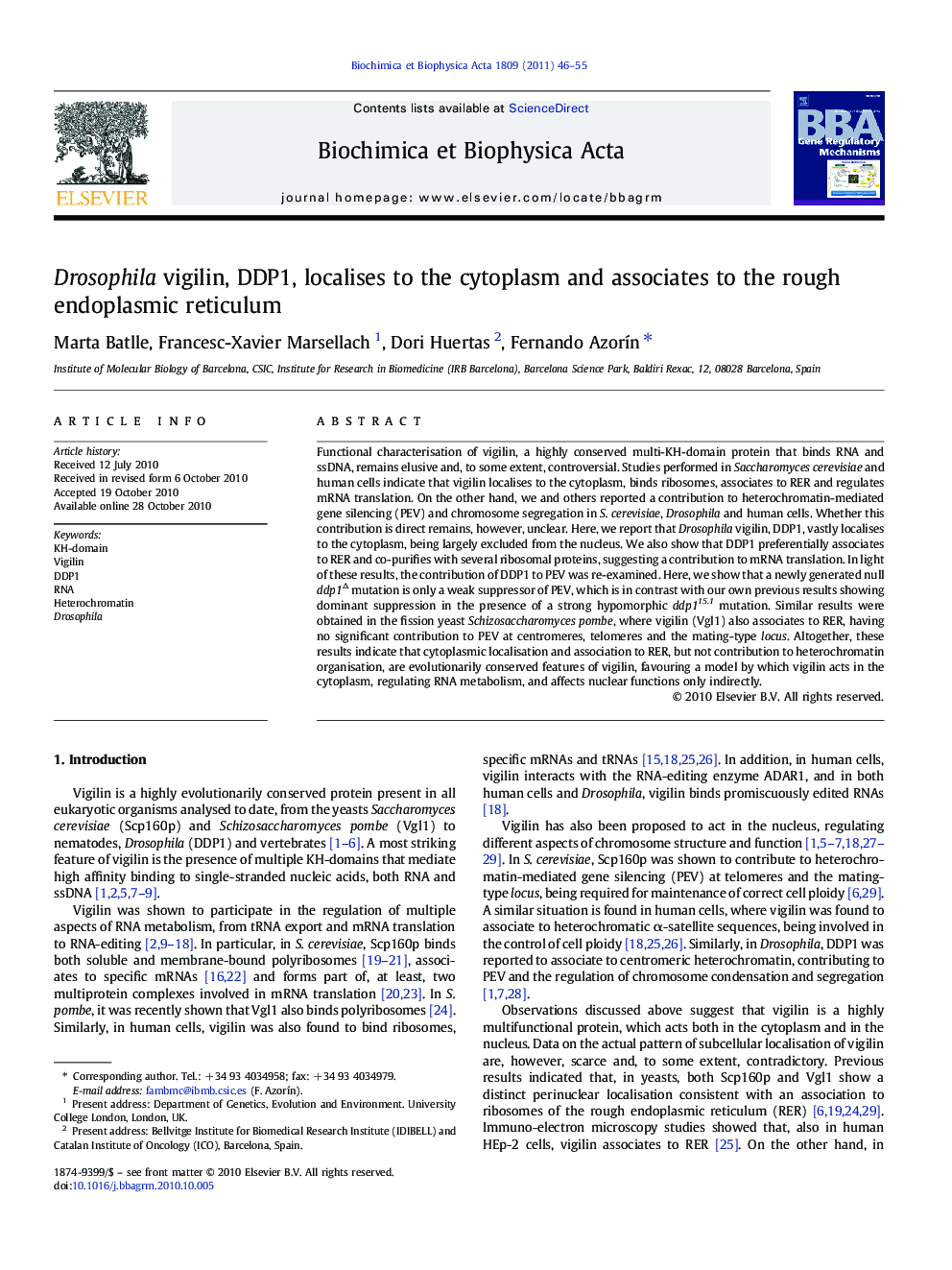| Article ID | Journal | Published Year | Pages | File Type |
|---|---|---|---|---|
| 1946720 | Biochimica et Biophysica Acta (BBA) - Gene Regulatory Mechanisms | 2011 | 10 Pages |
Functional characterisation of vigilin, a highly conserved multi-KH-domain protein that binds RNA and ssDNA, remains elusive and, to some extent, controversial. Studies performed in Saccharomyces cerevisiae and human cells indicate that vigilin localises to the cytoplasm, binds ribosomes, associates to RER and regulates mRNA translation. On the other hand, we and others reported a contribution to heterochromatin-mediated gene silencing (PEV) and chromosome segregation in S. cerevisiae, Drosophila and human cells. Whether this contribution is direct remains, however, unclear. Here, we report that Drosophila vigilin, DDP1, vastly localises to the cytoplasm, being largely excluded from the nucleus. We also show that DDP1 preferentially associates to RER and co-purifies with several ribosomal proteins, suggesting a contribution to mRNA translation. In light of these results, the contribution of DDP1 to PEV was re-examined. Here, we show that a newly generated null ddp1Δ mutation is only a weak suppressor of PEV, which is in contrast with our own previous results showing dominant suppression in the presence of a strong hypomorphic ddp115.1 mutation. Similar results were obtained in the fission yeast Schizosaccharomyces pombe, where vigilin (Vgl1) also associates to RER, having no significant contribution to PEV at centromeres, telomeres and the mating-type locus. Altogether, these results indicate that cytoplasmic localisation and association to RER, but not contribution to heterochromatin organisation, are evolutionarily conserved features of vigilin, favouring a model by which vigilin acts in the cytoplasm, regulating RNA metabolism, and affects nuclear functions only indirectly.
Research Highlights►Vigilin is a highly conserved multi-KH-domain protein whose functional characterisation remains controversial. ►Vigilin was proposed to regulate RNA metabolism as well as to contribute to heterochromatin function and chromosome segregation. ►Our results show that vigilin localises to the cytoplasm, where it associates to the RER and binds ribosomes. ►Vigilin is largely excluded from the nucleus and its contribution to heterochromatin function is indirect. ►From this we conclude that vigilin acts in the cytoplasm and affects nuclear functions only indirectly, clarifying a confusing topic.
